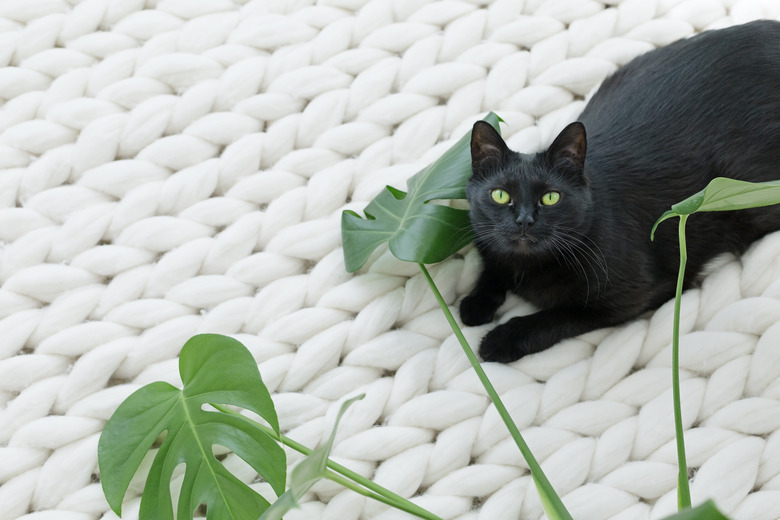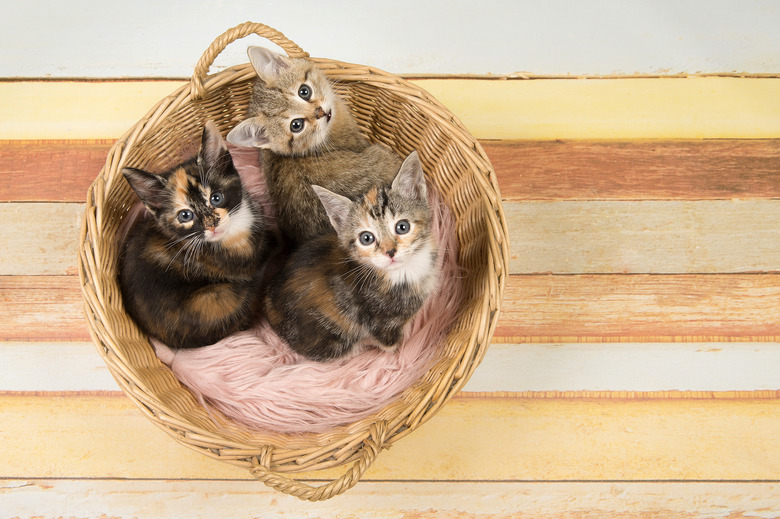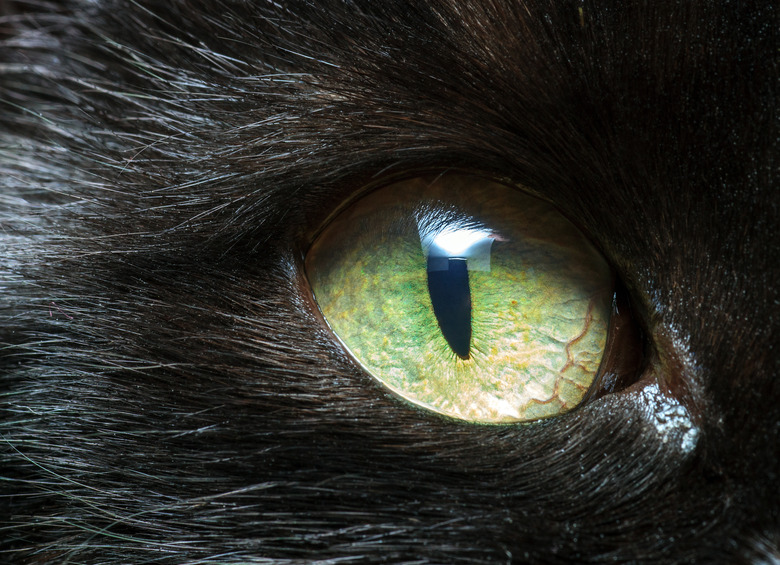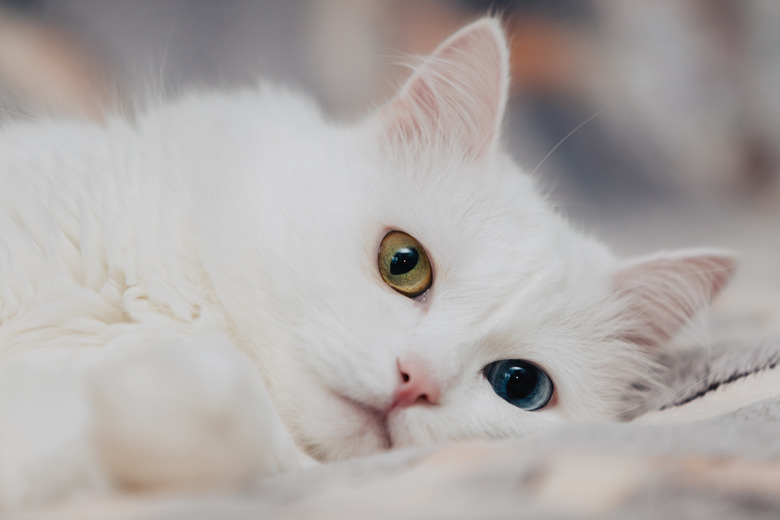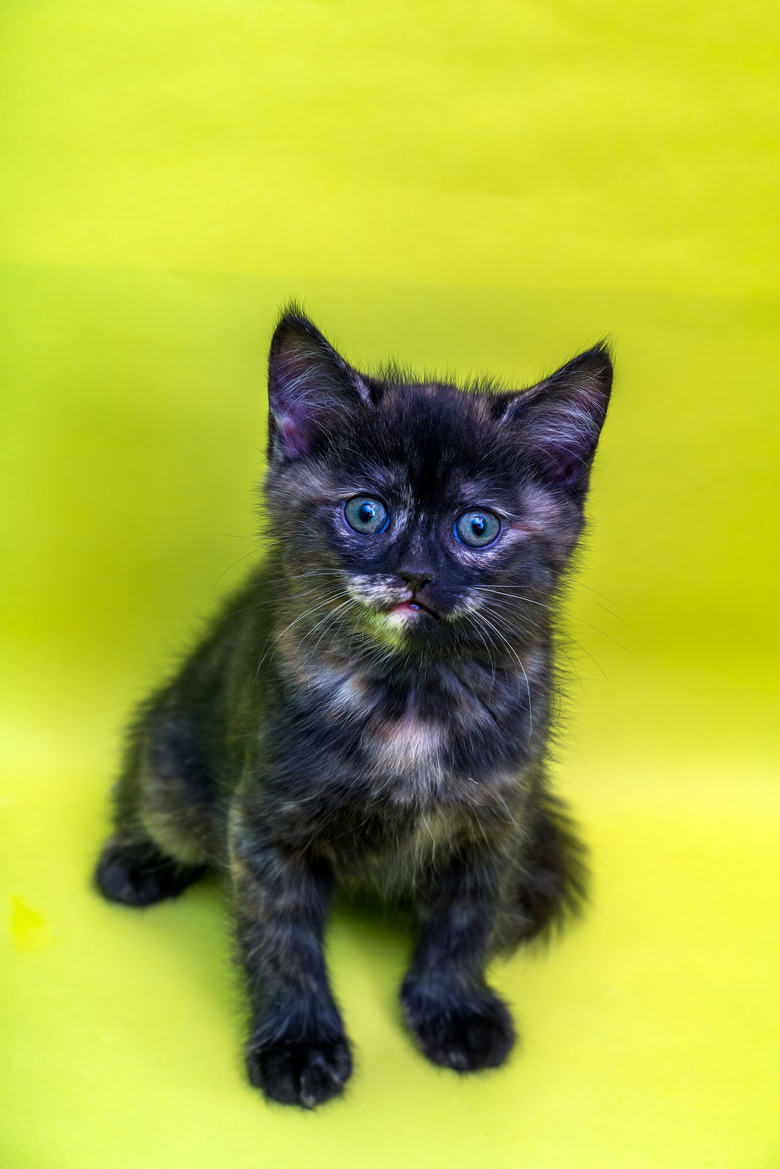What Causes Different Eye Colors In Cats?
Whether a cat has golden eyes, green eyes, or blue eyes, cats' eye color is mesmerizing. We name unique marbles after cats' eyes, and if we see just a picture of narrow vertical pupils, we can immediately know it's a cat eye. As with all animals and humans, cat eye color is determined by genetics. Genetics causes a cat to have all black fur, and in fact, that's pretty rare. The combination of black cat fur and green eyes is rarer still.
So what causes a cat's eyes to be a certain color?
Cats' coloring is caused by melanin
Cats' coloring is caused by melanin
Believe it or not, an all black cat is pretty similar to an all-white albino cat, but in the opposite way. Melanin is a pigment responsible for skin, eye, and fur color. More melanin results in darker fur, and less melanin results in lighter fur or different colors of fur, depending on the other genetics involved. An absence of melanin results in albinism, says Feline Living.
There is a genetic advantage to some animals having dark or all-black fur. According to National Geographic, all cat species are at least partially active at night, a time during which being light-colored or white would be a strong disadvantage. A black panther, for instance, is all black and hunts at night, when being black is a strong advantage.
Eye color of domestic cats can range from blue, green, yellow, and orange to copper or golden. Melanin can have different effects on fur and eyes, meaning that a cat with dark fur can have light-colored eyes and vice versa. Low levels of melanin will result in green eyes while the highest levels of melanin result in copper eyes. Some cats can even have two differently colored eyes! These are called odd-eyed cats.
Melanin also affects eye color
Melanin also affects eye color
The color of a cat's eyes comes from the amount of melanin in the iris, the area surrounding the pupil. A cat with no melanin in the iris will have blue eyes, according to Feline Living. Green eyes also have little melanin. Black cats are often associated with golden or green eyes. In the wild, tigers and lions, which have reddish fur, typically have golden or amber colored eyes.
According to the Sacramento Bee, all pointed cats (cats with light-colored fur and darker colorings on the face, ears, feet, and tail) have blue eyes/ Cats who are solid white or mostly white may have blue, green, gold or copper eyes. There is an association between white cats being deaf, but the deafness gene is associated only with the dominant white gene, not the gene that causes white spots.
Black cats and green eyes
Black cats and green eyes
The Cat Fanciers Association, the organization that registers cat breeds, maintains breed standards on 45 different cat breeds. The Bombay has a glossy black coat, but their breed standard calls for yellow eyes. The Egyptian mau has green eyes, but their coat is spotted and smoky colored. Havana browns, Russian blues, and Oriental shorthairs also have green eyes, but their coat colors are not black.
Most of the time, cats with bright copper eyes or bright green eyes are the result of selective breeding. In non-pedigreed cats, black cats can have yellow, copper, or green eyes depending on the amount of melanin, which also is the result of complex genetics.
Any solid-colored fur coat (all black, all white, all orange, etc) is the result of an allele, a variant of a gene similar to a mutation, says BasePaws. A black coat is the result of a dominant allele B of the feline primary gene for coat color (B/b/b1). The Cat Fanciers Association explains that a cat with a dominant fur color, either black, red, or tortoiseshell, must have a parent which also has a dominant color. Two parents with recessive color patterns such as cream or blue cannot have an offspring of a dominant color such as black.
Cat breeds with yellow eyes include the American wirehair, the British shorthair, the Chartreux, the Cornish rex, and others.
Odd-eyed cats (heterochromia)
Odd-eyed cats (heterochromia)
Cats can have two different eye colors, and when that happens the mutation is called heterochromia iridium. This occurs when a white or white spotting gene blocks the distribution and concentration of pigment in the iris during development. The condition is most commonly found in white cats that have one blue eye and the other being a shade of yellow or green, says BasePaws. These are known as "odd-eyed cats."
Odd-eyed cats are usually solid white or white spotted cats including black and white tuxedo cats. The white or white spot gene interferes with the movement of melanin into the eyes during development. Odd-eyed cats can pass this trait on to their kittens.
Dichromatic eyes in cats
Dichromatic eyes in cats
Dichromatic eyes can also occur. This means there are two colors in one eye. This appearance can be a nearly solid colored eye but with a "slice" of a different color in one eye, or it could look like a colored ring. According to Feline Living, If both of a cat's eyes are dichromatic, they may be a mirror image of each other.
Conclusion
Conclusion
When kittens are born, their eyes are blue because their melanin hasn't started working yet. As kittens grow to around six weeks of age, their true eye color appears, explain Full Circle Vet Care. Cats' eye color is a complex blend of genes that can influence coat color (spots or stripes, solid color, or swirls) along with eye color. Yellow eyes, green eyes, or blue eyes are all possible in black cat breeds due to whether there is a lot (copper-colored eyes) or a little (green eyes) of melanin.
Odd-eyed cats have two differently colored eyes due to a genetic variant called heterochromia. This is most common in white cats because the gene for white or white-spotted fur blocks the distribution of melanin into the eyes.
Always check with your veterinarian before changing your pet's diet, medication, or physical activity routines. This information is not a substitute for a vet's opinion.
